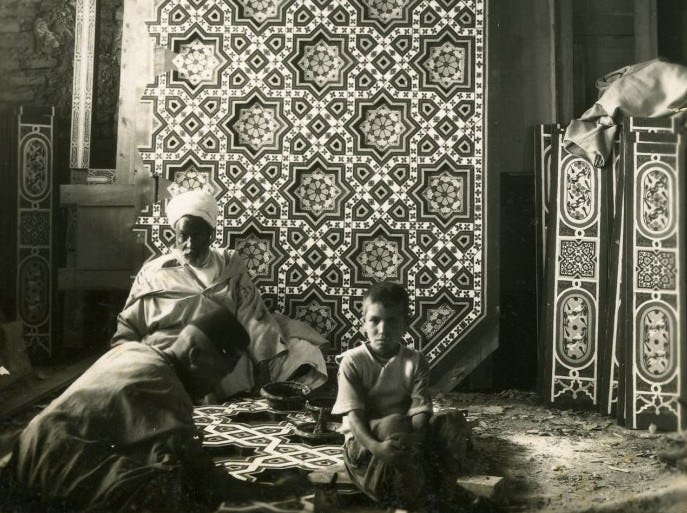Mirrored Muqarnas-Inspired Ceiling
Date1938-1939
PeriodModern
MediumPlaster (lime), mirrored glass, chrome plated brass moldings, steel armature
DimensionsOverall: 176 5/8 × 138 in. (448.6 × 350.5cm)
ClassificationsStonework
Object number78.4
DescriptionThis sparkling ceiling overlooks the former dressing room in the Mughal Gallery. The geometric, honeycomb-like vaults, called muqarnas, are formed from plaster inset with tiny, glittering mirrors. The inspiration for this design came from the tomb of Imam Reza in Mashhad in Iran, which Doris Duke visited on a trip to Iran in 1938. The mirrored ceiling, however, would not be out of place in Mughal India, where the domes and vaults of shish mahals, or “crystal palaces,” are covered with thousands of tiny mirrors, creating a dazzling effect.The rooms that today form the Mughal Gallery were originally Doris Duke’s private bedroom, dressing room and bathroom. They were referred to as the ‘Mughal Suite’ because of their architecture and decoration draw inspiration from the monuments of the Mughal dynasty, which ruled from 1526 until 1858 CE in South Asia. The inlaid marble, pierced stone screens and other decorative elements of the Mughal Suite can be compared, for instance, to the decoration of the Taj Mahal, the tomb built by the Mughal emperor Shah Jahan between 1631 and 1648 CE. Doris Duke would have seen the Taj and other Mughal buildings during her travels in India in 1935. Her version of Mughal architecture was created for her by the workshop of Rai Bahadur Seth Lachhman Das in Agra, India, working to the designs of Francis Barrington Blomfield, a British designer based in Delhi. The carved marble elements arrived and were installed in Hawaii in 1938-39.
On View
On viewCollections












